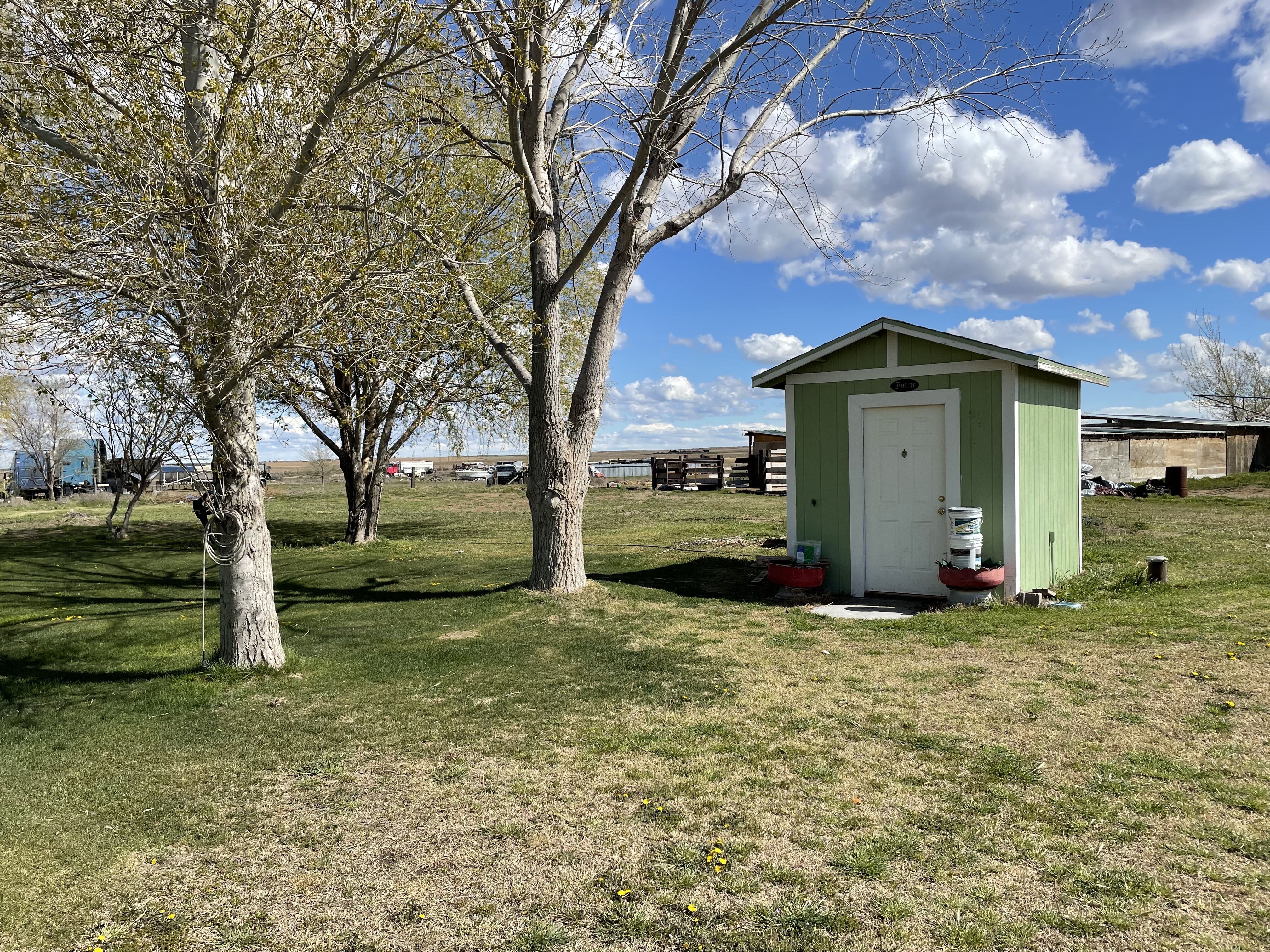
Silvia Hernandez's private well in the outskirts of Boardman, Oregon on April 15, 2022. The EPA lauded the state's efforts to deliver clean drinking water to Morrow County residents affected by nitrate pollution, but wanted more action to address the issue at its source.
Monica Samayoa, Monica Samayoa / OPB
The U.S. Environmental Protection Agency is urging state officials to take more action on nitrate pollution in Eastern Oregon’s Lower Umatilla Basin.
A July 29 letter from the EPA to the Oregon Health Authority, the Oregon Department of Environmental Quality and the Oregon Department of Agriculture praised the state for some of the measures it’s taken to provide clean water to residents in Morrow County, but said that’s not enough.
“EPA expects the state to hold nitrate sources accountable by requiring them to assume some of the responsibilities set forth above and, more importantly, to change their practices to reduce the amount of nitrate they discharge to groundwater,” wrote Edward Kowalski, director of EPA Region 10′s enforcement and compliance division.
Nitrates are a chemical commonly found in fertilizer. In excess amounts, they can affect the health of people’s lungs, thyroid and bladder.
High nitrate levels in Morrow County and western Umatilla County’s groundwater supply has been on the state’s radar for more than 30 years, but a recent round of water testing of private wells in the Boardman area found that many residents had unsafe levels of nitrates in their drinking water.
Kowalski highlighted a Lower Umatilla Basin work plan completed by the three agencies, the plan including initiatives for nitrate contamination education, free drinking water tests and alternative water sources where necessary. He also gave plaudits to the agencies’ plans to seek funding for these initiatives at the Oregon Legislature Emergency Board’s September meeting and the long session in 2023.
But Kowlaski wrote that the state could no longer rely on voluntary practices and had to address the source of nitrates. According to a 1997 study conducted by the state Department of Environmental Quality, agricultural and industrial operations were among the top sources of the chemical.
Kowalski encouraged the state to regulate industrial discharge and animal feeding operations through a permitting system established by the EPA’s National Pollutant Discharge Elimination System.
Before ending the letter, Kowalski left the door open to the EPA taking emergency action in Eastern Oregon.
“The Agency will continue to closely monitor the situation and continues to assess options for additional Agency intervention if necessary,” he wrote.
Responding to requests for comment, representatives from the Oregon departments of environmental quality and agriculture explained the enforcement work they were already doing while also emphasizing the barriers to expanding it further.
DEQ’s Laura Gleim reiterated the agency’s position on enforcement: It would take action where it could, but its reach was limited.
“DEQ is using what regulatory authority we have to reduce nitrate contamination from specific sources, including enacting stricter limits on food processing wastewater facilities,” she wrote in an email. “However, DEQ only has regulatory authority over a small portion of the identified sources of nitrate in this area.”
Liz Beeles of ODA said her agency would continue to monitor and regulate groundwater pollution from animal feeding operations and certain irrigated agriculture. But the latter could be difficult to track.
“The current monitoring framework makes it difficult to identify specific irrigated agricultural nutrient sources and link them to water quality outcomes in groundwater,” she wrote.
Beeles added that the department was looking into ways to “support or enhance” voluntary measures proposed in a 2020 plan.
Instead of focusing on enforcement, Oregon Health Authority spokesperson Jonathan Modie detailed his agency’s legislative efforts.
In an email, Modie wrote that OHA will seek money from the Emergency Board for well treatment systems and replacement water filters for affected households through June 2023.
During the Legislature’s long session next year, OHA plans to ask for money to pay for a new domestic well safety coordinator position, among other things.
Morrow County emergency manager Paul Gray, who has helped coordinate the county’s emergency response to the nitrate pollution, did not return requests for comment.
Scott Lukas, the committee chair of the Lower Umatilla Basin Groundwater Management Area, was traveling and said he would not be able to comment until Monday.

